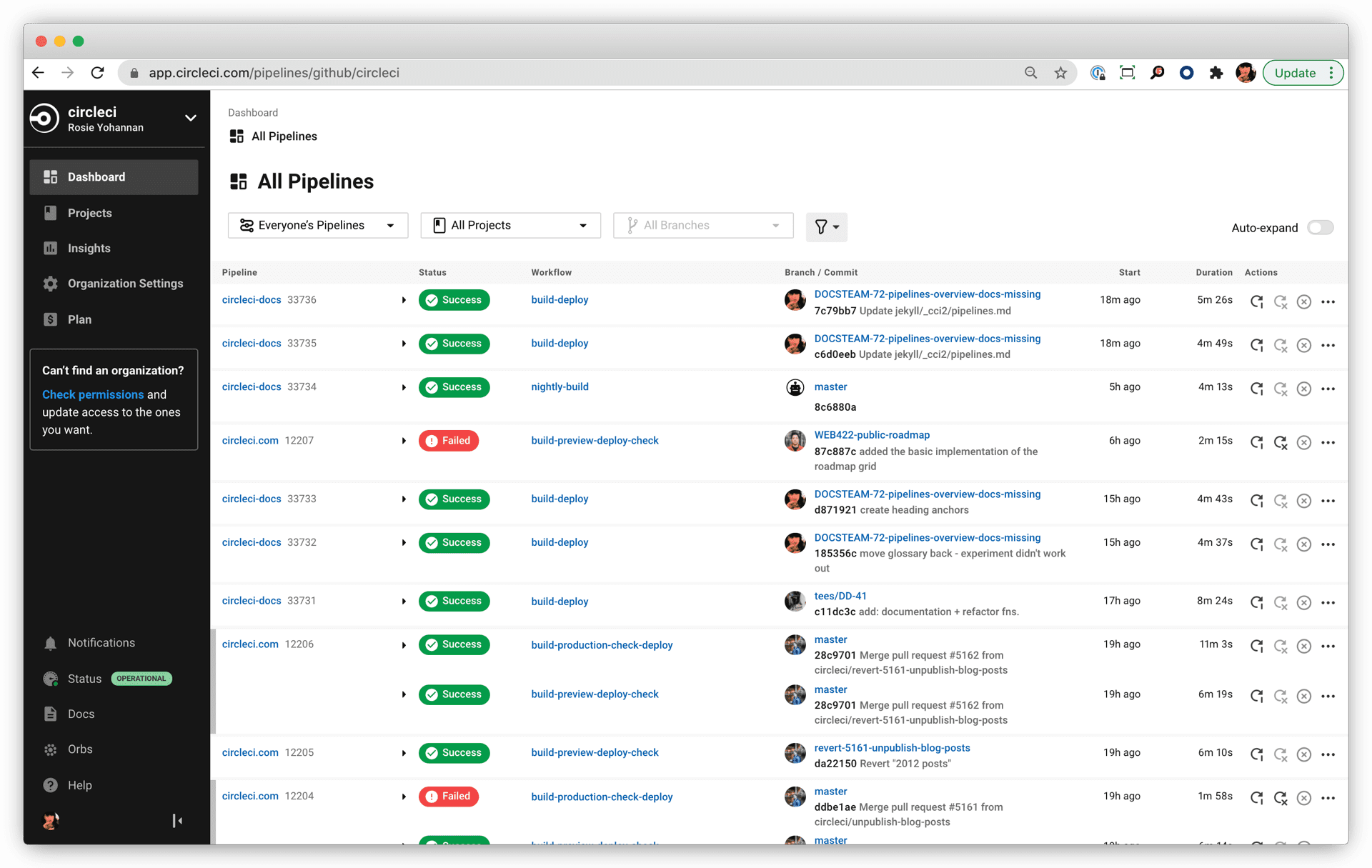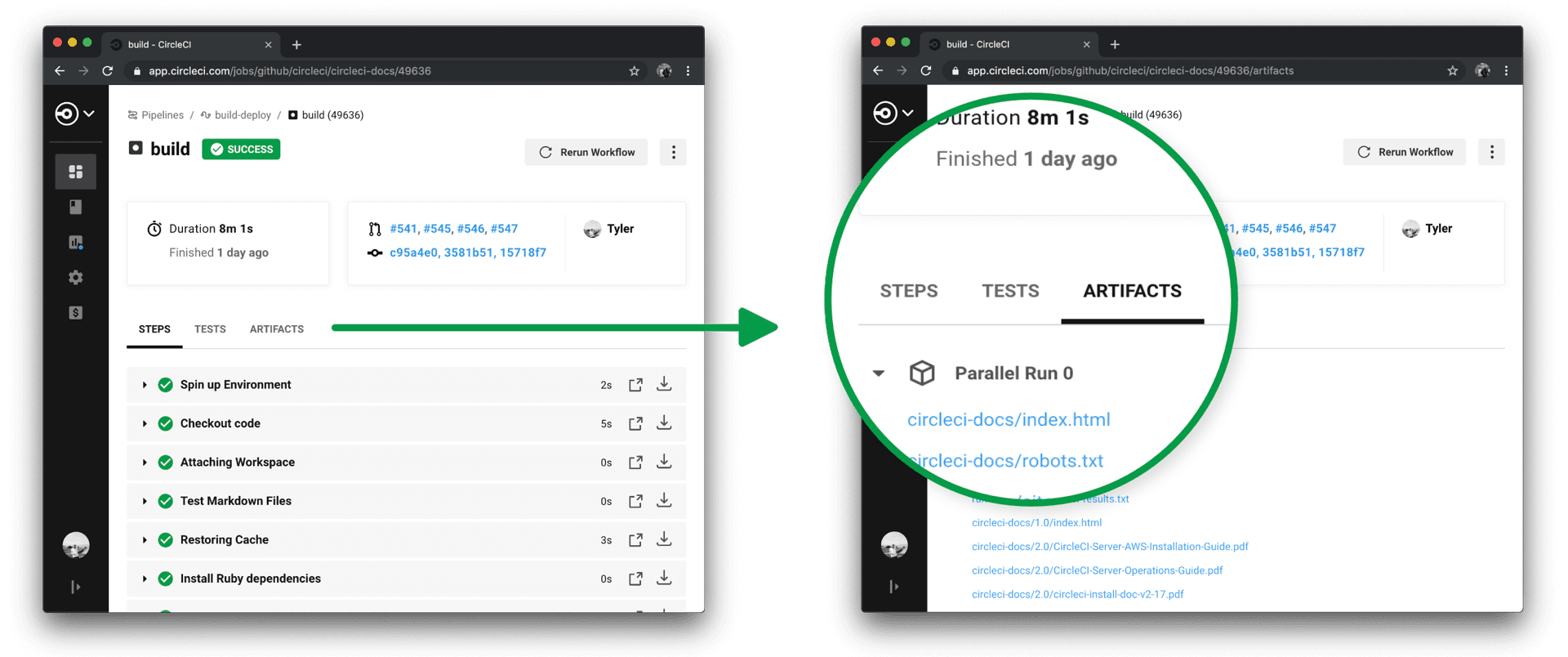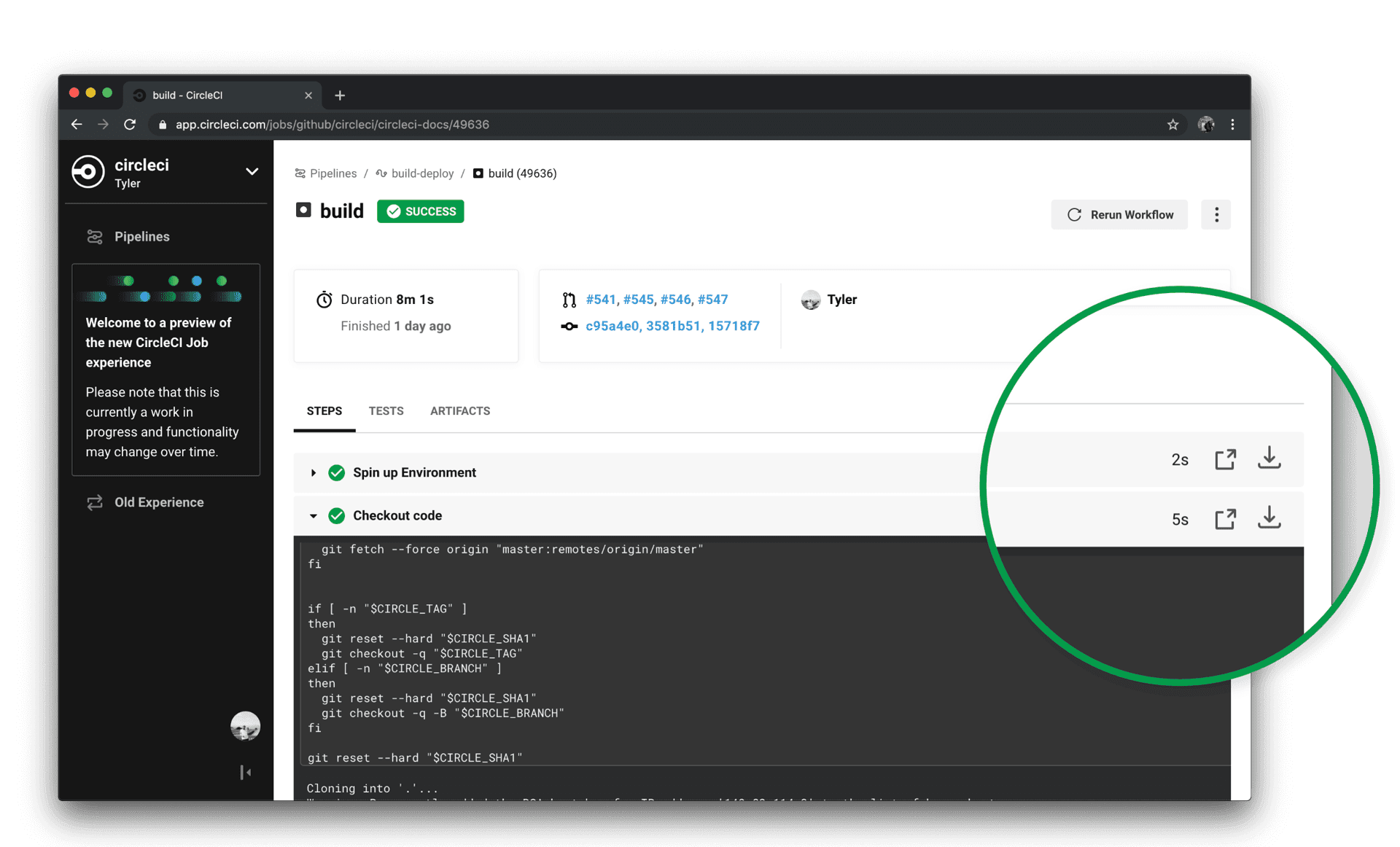Pipelines Overview

 Cloud Server v3.x
Cloud Server v3.x This page provides information on CircleCI pipelines, how they are triggered, and what they include. For further information on pipeline processing, and the features available within your pipelines, refer to the Pipeline Processing doc.
Overview
CircleCI pipelines are the highest-level unit of work, encompassing a project’s full .circleci/config.yml file. Pipelines include your workflows, which coordinate your jobs. They have a fixed, linear lifecycle, and are associated with a specific actor. Pipelines trigger when a change is pushed to a project that has a CircleCI configuration file included, and can also be scheduled, triggered manually through the CircleCI app, or using the API.
Pipelines are not available on installations of CircleCI server v2.x.
When visiting your CircleCI dashboard, you are shown a list of recently triggered pipelines for your organization/account.

Triggering a pipeline
Pipelines can be triggered in several ways. Each method is described below.
Trigger a pipeline on push to your code repository
Each time a commit is pushed to one of your projects, on a branch that has a .circleci/config.yml file included, a pipeline is triggered.
Trigger a pipeline from the CircleCI app
In the CircleCI app, when you have a specific branch selected, the Trigger Pipeline button becomes enabled. Click Trigger Pipeline, choose if you want to specify any pipeline parameters, and click Trigger Pipeline again.
Trigger a pipeline using the API
You can trigger a pipeline for a project using the Trigger a New Pipeline endpoint.
Pipeline architecture
A pipeline is composed of workflows, which are composed of jobs. By navigating from a pipeline to a specific job, you can access your job output, test results and artifacts through several tabs.

Further, the output of each job can be opened in a new tab (in either raw or formatted styling) with a unique link, making it share-able between team members.

Help make this document better
This guide, as well as the rest of our docs, are open source and available on GitHub. We welcome your contributions.
- Suggest an edit to this page (please read the contributing guide first).
- To report a problem in the documentation, or to submit feedback and comments, please open an issue on GitHub.
- CircleCI is always seeking ways to improve your experience with our platform. If you would like to share feedback, please join our research community.
Need support?
Our support engineers are available to help with service issues, billing, or account related questions, and can help troubleshoot build configurations. Contact our support engineers by opening a ticket.
You can also visit our support site to find support articles, community forums, and training resources.

CircleCI Documentation by CircleCI is licensed under a Creative Commons Attribution-NonCommercial-ShareAlike 4.0 International License.



